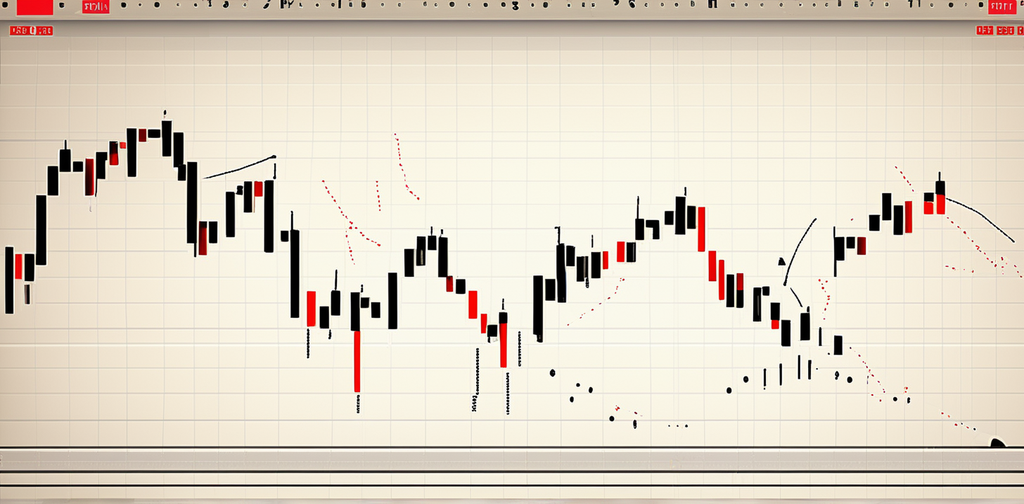In the dynamic world of financial markets, understanding key trading concepts is crucial for anyone looking to engage in profitable trading activities.
One such concept is the “trading tick,” which plays a vital role in determining price movements and enabling traders to make informed decisions. This article will explore the significance of trading ticks, their calculation, and their impact on trading strategies. By this point, you will have a thorough comprehension of this crucial idea that will enable you to better navigate the markets.
Table of Contents
Introduction
In today’s fast-paced financial markets, traders must have a solid grasp of trading concepts to stay ahead. One such concept is the trading tick. Whether you’re an experienced trader or just starting, understanding trading ticks is essential for making informed decisions and executing successful trades.
What is a Trading Tick?
A trading tick refers to the minimum price movement of an asset or security in a given market. It represents a single increment in price and is often used to measure and analyze market activity. Ticks play a vital role in various trading strategies, as they provide valuable insights into market sentiment and liquidity.
The Role of Trading Ticks in Price Movements
Trading ticks are closely tied to price movements in financial markets. They reflect the buying and selling pressure on an asset, indicating the sentiment of market participants. By monitoring tick activity, traders can identify trends, gauge market volatility, and make informed decisions based on the prevailing market conditions.
Calculating Trading Ticks
The calculation of trading ticks depends on the specific market and instrument being traded. Different markets have varying tick sizes, which represent the minimum price increments. A tick, for instance, may denote a one-cent price change in the stock market while a fraction of a point could be represented by it in the futures market.

Understanding Tick Sizes and Tick Values
Tick sizes and tick values are important considerations when trading. Tick size refers to the minimum price movement, as mentioned earlier, while tick value represents the monetary value of each tick. Traders can effectively predict the risks and rewards of a particular deal by considering these aspects.
Tick Data and Market Analysis
Tick data, which consists of individual trade records, is valuable for conducting market analysis. It provides detailed information about price movements, trading volume, and order flow. By analyzing tick data, traders can identify patterns, study market behavior, and develop effective trading strategies.
The Impact of Trading Ticks on Trading Strategies

Trading ticks have a significant impact on various trading strategies, including day trading, swing trading, and position trading.
read thisVedanta Share Price no1: Historical Analysis, Factors Impacting it, and Future Forecast
Day Trading and Scalping Strategies
For day traders and scalpers, who aim to profit from short-term price movements, trading ticks play a crucial role. These traders closely monitor tick data, looking for rapid price changes and taking advantage of small price differentials. By executing numerous trades based on trading tick analysis, day traders can capitalize on intraday market fluctuations.
Swing Trading Strategies
Swing traders focus on capturing medium-term price movements. They use trading ticks to identify potential entry and exit points, aiming to ride the market trends. By analyzing tick patterns and combining them with other technical indicators, swing traders can make well-timed trades that align with the overall market direction.
read thisWhich Are the Best Algorithmic Trading Platforms or Tools in India no1
Position Trading Strategies
On the other hand, position traders adopt a long-term approach to the market and hold positions for lengthy periods of time. While trading ticks may not be as crucial for position traders, they still provide valuable insights into market liquidity and sentiment. By considering tick data in conjunction with other fundamental and technical analysis, position traders can make informed decisions when entering or exiting trades.
Risk Management and Trading Ticks
Effective risk management is paramount in trading, and trading ticks can aid in this process. By analyzing tick data and understanding price movements, traders can set appropriate stop-loss orders, manage position sizes, and implement risk mitigation strategies. The insights gained from trading ticks help traders make calculated decisions, reducing the potential for significant losses.

Limitations and Considerations
While trading ticks provide valuable information, it’s important to consider their limitations. Ticks alone may not provide a complete picture of market conditions, and it’s essential to complement tick analysis with other forms of technical and fundamental analysis. Additionally, market liquidity and tick data quality may vary across different instruments and timeframes, so traders should be mindful of these factors.
Tools and Platforms for Tick Analysis
Various tools and platforms are available to traders for analyzing trading ticks. These include advanced charting software, data providers, and trading platforms that offer tick-based data. By leveraging these tools, traders can access real-time tick data, visualize price movements, and conduct in-depth market analysis.

Conclusion
In summary, trading ticks play a vital role in the world of trading. Understanding their significance, calculating tick sizes, and leveraging tick data for market analysis are key to making informed trading decisions.You can improve your trading abilities and raise your chances of success in the financial markets by implementing trading ticks into your trading techniques and risk management strategy.
FAQs
1. How can I calculate the tick value for a specific instrument?
To calculate the tick value, multiply the tick size by the contract size or the number of contracts traded.
2. Can tick analysis be used for all types of financial instruments?
Yes, tick analysis can be applied to various financial instruments, including stocks, futures, and currencies.
3. Are tick data and time-based data interchangeable?
While both types of data provide insights into market activity, tick data offers a more granular view of price movements and order flow.
4. Is tick data available for free?
While some platforms offer basic tick data for free, comprehensive and high-quality tick data often requires a subscription or a paid data provider.
5. How frequently should I monitor trading ticks?
The frequency of monitoring trading ticks depends on your trading style and strategy. Intraday traders may need to monitor ticks more frequently than position traders.








I discovered your blog site on google and check a few of your early posts. Continue to keep up the very good operate. I just additional up your RSS feed to my MSN News Reader. Seeking forward to reading more from you later on!…
Right now it looks like WordPress is the best blogging platform available right now. (from what I’ve read) Is that what you are using on your blog?
Loving the information on this website , you have done outstanding job on the articles.
Everything is very open and very clear explanation of issues. was truly information. Your website is very useful. Thanks for sharing.
As I website owner I conceive the subject matter here is really superb, appreciate it for your efforts.
hi!,I like your writing so much! share we communicate more about your article on AOL? I require a specialist on this area to solve my problem. Maybe that’s you! Looking forward to see you.
Hello this is kind of of off topic but I was wondering if blogs use WYSIWYG editors or if you have to manually code with HTML. I’m starting a blog soon but have no coding experience so I wanted to get guidance from someone with experience. Any help would be enormously appreciated!
Thank you for sharing with us, I think this website genuinely stands out : D.
Real superb info can be found on website. “Education is what most receive, many pass on, and few possess.” by Karl Kraus.
I am happy that I detected this site, precisely the right information that I was searching for! .
I have read some good stuff here. Definitely worth bookmarking for revisiting. I wonder how so much attempt you set to create this kind of magnificent informative website.
Great V I should definitely pronounce, impressed with your site. I had no trouble navigating through all the tabs and related info ended up being truly simple to do to access. I recently found what I hoped for before you know it at all. Quite unusual. Is likely to appreciate it for those who add forums or something, web site theme . a tones way for your client to communicate. Nice task..
Hey there, I think your site might be having browser compatibility issues. When I look at your blog in Ie, it looks fine but when opening in Internet Explorer, it has some overlapping. I just wanted to give you a quick heads up! Other then that, superb blog!
Woah! I’m really loving the template/theme of this website. It’s simple, yet effective. A lot of times it’s tough to get that “perfect balance” between superb usability and visual appearance. I must say you’ve done a very good job with this. Additionally, the blog loads very fast for me on Firefox. Exceptional Blog!
Sumatra Slim Belly Tonic primarily focuses on burning and eliminating belly fat.